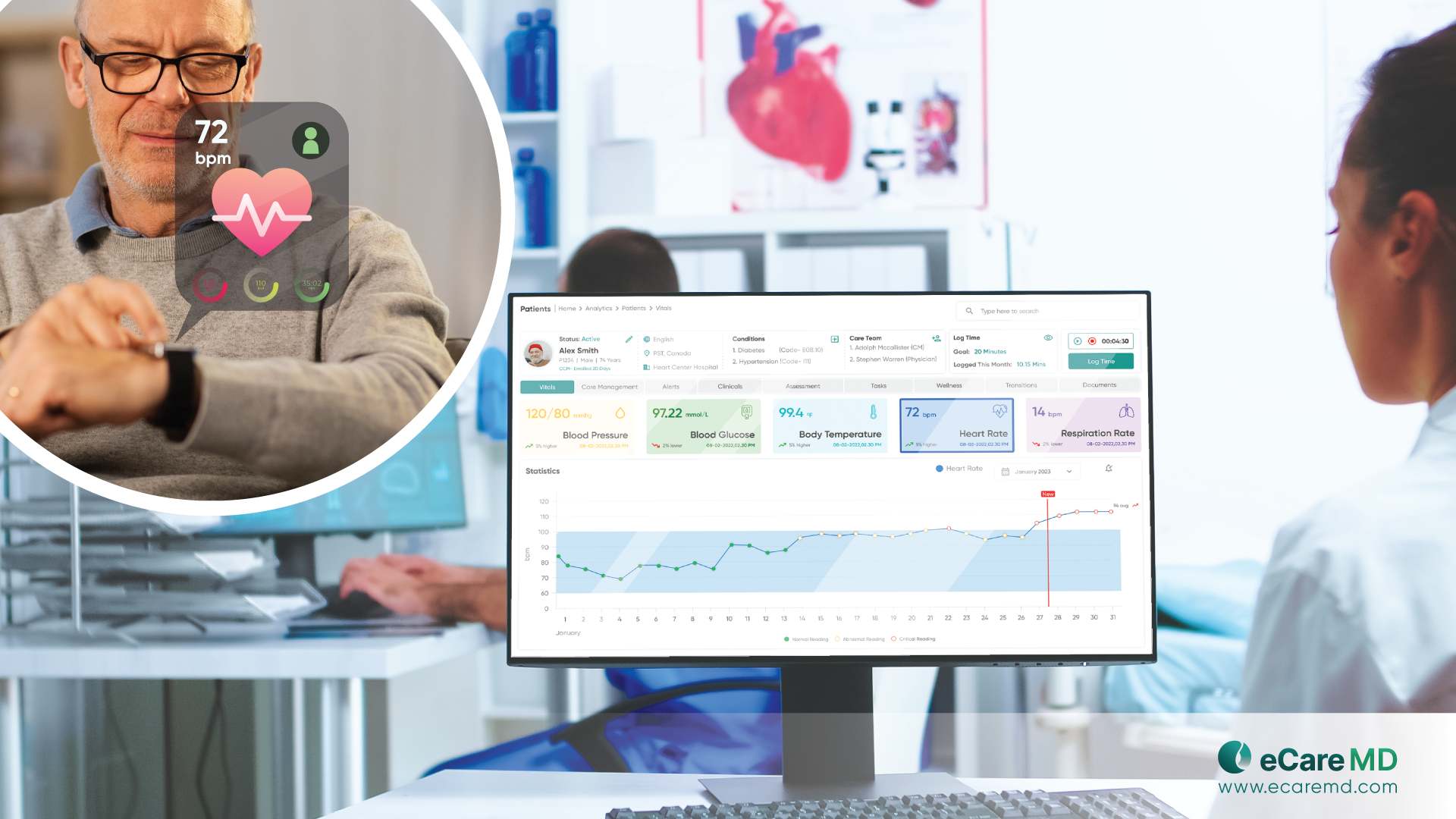Client Background
The client is a well-known Texas-based healthcare professional who oversees a diverse patient population of senior citizens with a variety of chronic illnesses, including diabetes, hypertension, heart disease, etc. In the past, the patient depended on in-person consultations and manual coordination between various medical specialists, primary care doctors, and allied health personnel.
Business challenges
According to NCOA research, nearly 95% of adults 60 and older have at least one chronic condition, while nearly 80% have two or more. These multiple chronic conditions of elderly patients make managing complex and multifaceted. Hence, these patients must receive comprehensive and coordinated care to manage their chronic conditions effectively.
As the client operates a traditional healthcare setting hence, due to the limitations of communication facilities and others, the client has faced various challenges, as given below:
1. Lack of communication facilities
Chronic condition management requires prolonged duration and unidirectional efforts to effectively manage and obtain expected patient health outcomes. Due to the limited communication facilities, the care providers were not able to communicate with patients at regular intervals, which hampered the patients' health outcomes and their participation in the treatment plan.
2. Regular monitoring and follow-up
Traditional healthcare settings require in-person consultations and follow-up. Patients tend to unfollow routine consultations and follow-up visits for chronic condition management. Because of this, care providers are not able to analyze the patient's health changes and keep track of them. This inattention or unawareness of patient health has adverse effects and increases the patient hospital readmission rate and emergency visits.
3. Patient engagement challenges
Lack of communication facilities, patient empowerment challenges, and following routine activities make patients tedious and disengaged from the treatment plan. Excessive treatment duration is also a major factor for disengagement of the patient
4. Fragmented Care
Elderly patients mostly have more than two chronic conditions that require care from various specialists like care managers, physicians, pharmacists, lab technicians, registered nurses, etc.
Care delivery from different care providers leads to duplication of tests, operations, and different treatment plans. This diversified treatment affected the patient's health outcomes and confidence towards the care delivery.
Solution
Facing these challenges over a period of time the client identified the need for the implementation of care coordination software into the practice to deliver more patient-centered care with centralized access to patient medical information.
Hence, the client has approached Medarch Inc. for eCareMD software that effectively manages the various chronic conditions older patients have. Our team of business analysts and subject matter experts took multiple calls with the client and identified the exact requirements. After identification, our team implemented the software into the client’s practice, and the client experienced improved patient health outcomes and satisfaction levels.
Solution Highlights
Enabling patient-centered care delivery with the help of advanced technological features of eCareMD software helped address various issues the client has faced.
1. Reliable Communication Channels
Enhanced patient-provider communication is the need of the hour. Our eCareMD software has inbuilt features like secure voice/video calls, messaging, and real-time chat functionality. These communication features have extensively helped care providers communicate with patients in real-time, allowing them to discuss health progress, concerns, and suggestions more and perform clinical activities like care plan reviews, etc.
These communication features helped to increase the patient's confidence, satisfaction levels, And participation in the treatment plan.
2. Remote patient survilieance
Proactive management and close attention to patient health is the key to obtaining improved patient health outcomes.eCareMD software enabled care providers to track the trends and fluctuations in the patient's health vital remotely while the patient is at home. The software is integrated with various remote patient monitoring devices such as blood pressure monitors, smart glucometers, pulse oximeters, etc. These devices continuously record patient health vitals and transmit them to the care provider’s eCareMD dashboard.
This feature of eCareMD resulted in a reduction in patient hospital readmission and emergency visits and a more preventive care approach.

3. Robust patient engagement tools
As the treatment duration is longer, it is very important to keep the patient engaged with the treatment plan. Increased patient engagement tends to obtain improved patient health outcomes. The eCareMD software has resolved this challenge in a more diligent way as it enabled care providers to configure reminders being sent to patients in the form of email, SMS, and push notifications for medication and other activities like exercise, prescription refills, etc. Also, to increase the awareness of patient about their chronic condition.
4. Centralized Medical Records
The eCareMD software provided a centralized repository for patient medical records, allowing all care providers access to comprehensive and up-to-date patient information. This feature ensured that all providers were aware of each patient's complete medical history, current medications, and ongoing treatment plans. It resulted in informed decision-making that helps in achieving expected patient health outcomes.
Value Delivered
1. Enhanced Patient Satisfaction
The ability to discuss health progress and concerns in real time significantly boosted patient satisfaction and engagement in their treatment plans.
2. Reduced Readmissions
Real-time data transmission to the provider’s dashboard helped in the early detection of health issues, reducing hospital readmissions and emergency visits.
3. Higher Adherence
Improved adherence to treatment schedules through timely reminders sent via email, SMS, and push notifications.
4. Informed Decision making
Ensured all providers were informed about each patient’s complete medical history, current medications, and ongoing treatment plans, leading to more informed and effective clinical decisions.

